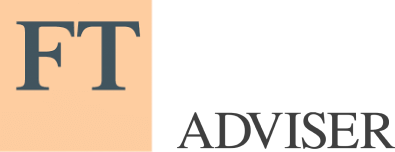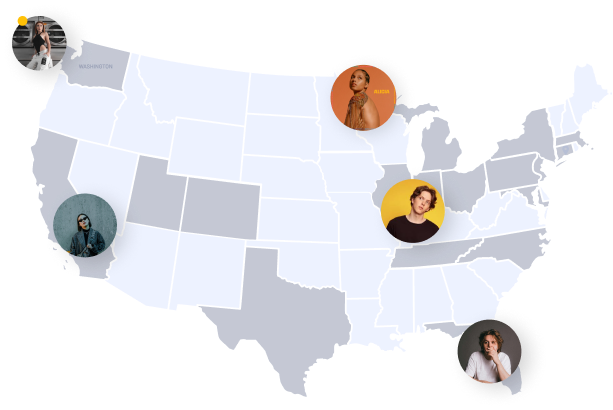What are 401K Pension Plans?
401 K plans are a pension scheme offered by employers to their employees. They are a defined contribution pension scheme, also known as a money purchase (similar to defined benefit plan in the UK) scheme or an employer-sponsored pension scheme; it works just like a life insurance.
The employee contributes to the pension plan, and the employer usually matches the employee’s contribution by a percentage or fixed amount. The name’ 401k’ was taken from the tax code section in which the plan was established.
How does a 401k work?
The employee will choose the amount that they wish to contribute, or an automatic rate will be applied to the employee. Contributions are deducted directly from the employee’s salary within a 401K plan. Contributions will be tax-free or tax-deducted depending on the type of 401K, more on this later.
The employer will then make investments on your behalf using the contributions; a typical 401k investment plan includes stocks, bonds and funds. The employer will usually offer the employee a choice of investment portfolios rather than giving them complete flexibility over their investments.
Sometimes you must ask for this choice, otherwise, you will be put into the employer’s preferred investment plan. The employer’s investment plan may not match your risk appetite; it could be too risky or, more likely, too cautious.
Employers are more likely to choose a cautious plan to avoid being at fault for their employee’s investment loss. A cautious strategy would be expected to earn a lower return rate, which is particularly unsuited to young employees who are focused on growing their capital rather than older employees focused on preserving. It is always best to check with your employer the scheme details and ensure your investments are suited to your needs.
The employer will usually match an employee’s contributions, depending on the details of the scheme. This can be a percentage of the employee’s contributions or a fixed amount. You should check the details of your scheme to be sure. If your employer matches by a percentage, you should try to max out your contributions as it is hugely beneficial for retirement savings or your retirement account.
What are my 401k Contribution Limits for 2021?
The maximum 401K contribution limits for 2021-2022 is $19500, the same as the previous year. After that, the limits are adjusted annually for inflation. However, for people over 50, you can increase your contributions using so-called ‘catch-up’ contributions.
Catch-Up Contributions
If you are over the age of 50 and therefore nearing retirement, you can contribute over the standard allowance for 401k contributions. The IRS introduced this to help those nearing retirement to ensure they can build their pot to last through retirement.
In 2021, over 50’s can contribute an extra $6500 per annum, bringing the total limit to $26000 per annum for 2021-2022.
The combined limit of employee’s and employer’s contributions
Total 401K contribution limits for workers under 50 in 2021 is $58000 or 100% of your compensation, including employer’s contribution, whichever of these amounts is smaller.
For the Over 50s, including the Catch-up Contributions, the limit increases to $64500 for 2021.
Other Rules
You can still hold other retirement plans, including IRAs.
When can I take benefits from my 401k?
401k’s have the same minimum limit as most other pension plans, which is 59 and ½. But if you leave a job as early as age 55, you can tap the 401(k) penalty-free.
If you withdraw benefits before the age of 59 and ½, you will pay a 10% early withdrawal penalty and taxes on the funds. As well as giving up any growth you may have had if you left it within the investment plan.
How to pass on my 401K to my beneficiary?
When setting up your 401k, you will be required to fill out a form asking for a primary and contingent beneficiary or beneficiaries. If you do not assign the 401k, it will go to probate court- so make sure you have designated your 401k.
The primary beneficiary is the initial person your 401k would be passed on to, and the contingent is the latter if the primary were to have died. Thus, the contingent loses all claims to the assets once they have been passed on to the primary beneficiary.
If you wish, you can allocate a percentage to several primary beneficiaries, such as a 50 per cent split between your spouse and children.
What are Required Minimum Distributions (RMDs), and how do they affect me?
The IRS requires you to withdraw so-called required minimum distributions (RMDs) from your 401k when you reach the age of 72. However, if your 70 birthday is before July 1, 2019, you must start taking RMDs from the age of 70½. You are not required to take RMDs from a 401k if held, and you are still working with your current employer.
The IRS will place penalties on you if you fail to take RMDs. However, Roth 401k’s are not required to pay RMDs. To read up more on RMDs, go to the IRS website via this link.
What to do with my 401k when I change jobs?
You have several options when deciding what to do with your 401k after changing jobs, the following are the options:
1. Leave the money with your former employer’s 401k plan
As long as you have over $5000 within the pension plan, it is within your legal rights to leave your assets within the plan. Usually, you have up to 30-90 days to decide after leaving your employment; you should ask your employer for details. If your account is under $5000, your employer can choose to cash you out of the plan without your approval.
Advantages
- If the plan has performed effectively and you believe it is well managed, it may be a better option than moving to a less well-managed plan.
- It saves you having to do anything, and this shouldn’t be your main reason!
Disadvantages
- After you leave, you may be restricted in your access and flexibility to your investments. Often, there are rules stipulating that you can only make a certain number of changes to your investment choices. Moreover, there may be rules on when you can draw down or transfer out of the plan.
- Former employees are sometimes charged a maintenance fee, and any extra benefits may not be available to former employees.
2. Rollover your 401K into your new employer’s 401k plan
Most new employers will accept a rollover from your former employer’s 401k plan.
Advantages
- Consolidating your plans can make it much easier for you to manage and keep track of what your investments are doing. Many people will forget about their former plans and disregard that the assets may need adjusting to meet their needs. For instance, as people near retirement, they move towards more conservative investments.
- You are more likely to have a correctly diversified plan. If you lack financial experience, having two pots can cause you a headache, and you might overexpose yourself to specific asset classes or industry sectors. A poorly diversified portfolio can mean taking on more risk without an added benefit of a higher expected return.
- The new plan may have better benefits, and the former plan may cut off certain benefits to former employees.
Disadvantages
- The new plan may not be as effectively managed as the previous
- There may be fewer investment choices with the new plan.
Unless your new employer’s plan is flawed and your old plan is good, it is advisable to rollover your 401k to the new 401k between these two options. However, we have another option:
3. Rollover your 401k into an IRA
IRAs will give you the most flexibility and choice over your investment options. They have a vast universe of investment classes, and you have 100% control over the investments that go into your portfolio. To read more about IRAs, look at our page on IRAs.
Advantages
- Unlimited investment choice. You can satisfy your investment needs entirely by choosing the best portfolio for you. In addition, you can include alternative investments such as gold or even commercial property within your assets.
- Greater control over fees and costs. You choose the fees you are happy to pay for by selecting the IRA you want; you have limited options over costs inside your employer’s 401k plan. Employer plans may have non-disclosed or hidden fees. The fees are usually higher than what you could get if you choose the investments yourself.
- Flexibility to pass on your wealth to beneficiaries. 401K schemes only allow you to pass on your retirement benefits to your spouse unless you have a signed release from your spouse; with an IRA, you can name anyone to be your beneficiary.
Disadvantages
- To effectively manage your IRA, you must seek a professional financial advisor. This can be costly and time-consuming trying to find the right advisor for you. In addition, if you have a small pot, the initial fees may not be worth the cost of such advice.
4. Cash out your old 401K account
Cashing out is not an option for most people as it incurs a high tax penalty if drawn out before 55.
Advantages
- The money is immediately available to you. It may be suited to someone ill with a short life expectancy or a person in severe financial difficulty.
Disadvantages
- You will have to pay income tax on the money that you draw out from a 401k. You will be required to pay both federal and state income tax on the money you draw out. If the drawdown is a significant amount, you will be pushed up into a higher tax bracket, increasing the income tax you will pay in that year.
- You will have lost your retirement savings.
Overall, the best option for many people is to move into an IRA, where you have the most freedom and access to your money. Click here to read our page on 401K Rollovers.
The Roth 401K Variation
The Roth 401k is an option that more and more employers are offering to their employees.
It is a post-tax pension plan, which means that you pay tax on your annual contributions before going into your pension scheme investments. As a result, when you draw down on your retirement income, it will be tax-free.
Traditional 401K’s are pre-tax, meaning that your contributions are tax-free and that you pay income tax at the point that you drawdown pension income at retirement.
To learn more about Roth 401k’s, read our article on them here.























